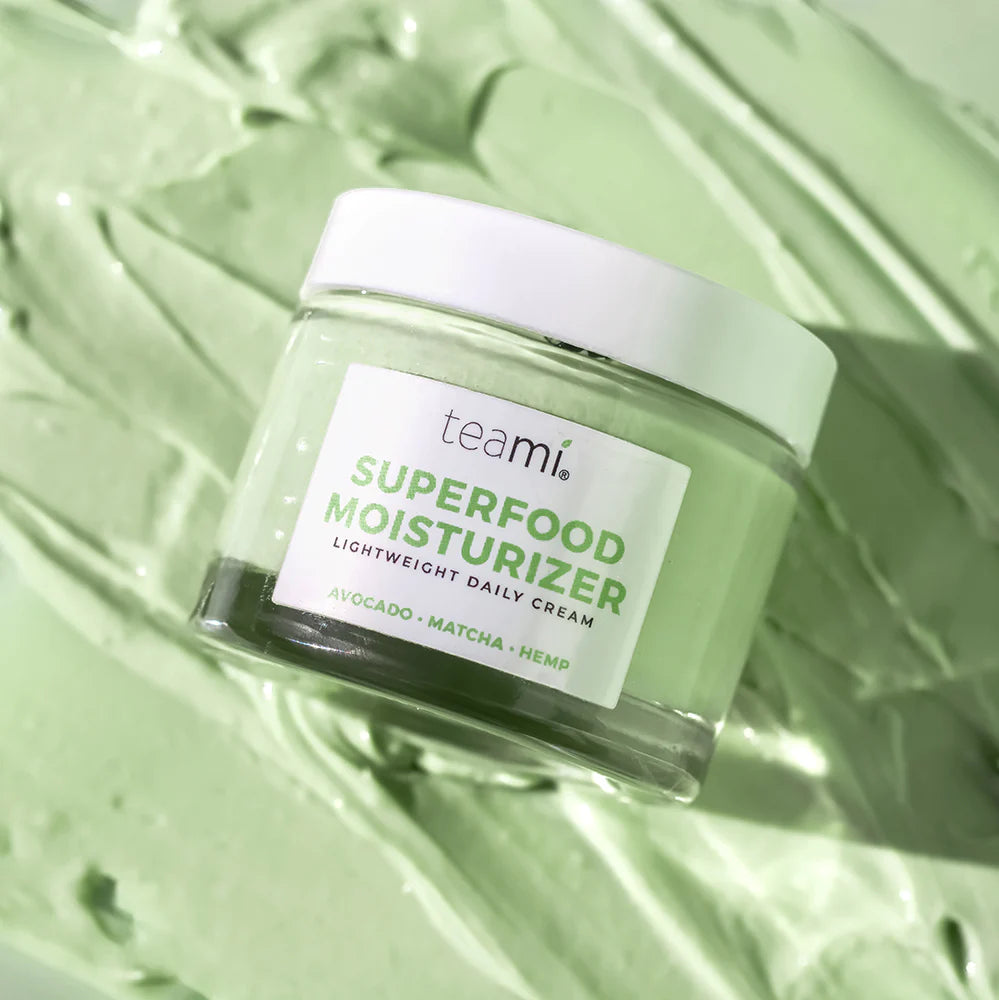Your Healthy Gut Diet Plan: 1 Week of Healthy Meals

When it comes to maintaining our health and wellbeing, many things we do play into the part. In particular, the foods we eat have a substantial influence on maintaining a healthy weight, but that's not all they can do. By paying attention to our diets, it's possible to improve the health of our guts—and the microbiomes inside.
This concept is the foundation of Dr. Raphael Kellman's Microbiome Diet, which aims to balance out the bacteria ecosystem inside our guts to improve overall health.
What's essential to understand is that, while bacteria can cause illness, not all of them are bad, and positive bacteria are crucial to a healthy digestive tract.
While Kellman's aim with the Microbiome Diet was to focus on gut health, many other benefits have become associated with it, including the potential boosting of one's metabolism and assisting in weight loss. So what does this diet look like when it comes to meal plans?

What is the Microbiome Diet?
Before we can get into the details of what you'll be eating when on the Microbiome Diet, it's essential to understand how the overall plan works. This diet works in three major phases: microbiome repair, metabolism-boosting, and regular maintenance, each of which lasts a distinct length of time and has different restrictions on what you can eat and drink.
In the first stage, you aim to repair any existing damage to your gut and set a foundation for the bacteria microbiome. The initial phase is also the most restrictive, as you don't want to eat anything that could upset the balance of your gut. Instead, mostly organic, plant, and probiotic-rich foods will be on the menu. Lasting for twenty-one days, the opening stage of the Microbiome Diet can be one of the trickiest to maintain.
Once you enter the second stage of the healthy gut diet plan, some of those meal restrictions start to loosen. Some of the "must avoid" foods from phase one are permissible now and then, and many types of food can re-enter your diet, such as eggs, gluten-free grains, dairy, and many fruits and vegetables. Over the twenty-eight days of this phase, your gut continues to get stronger.
The final phase doesn't have a definitive end, as its primary goal is to maintain the microbiome levels you developed over the first two stretches of the healthy gut bacteria diet. While food items like processed food and high levels of sugar are still off the table, you'll have increased flexibility in what you eat from stage two. This phase can last as long as you like, generally until you've reached your weight loss goals.
What are Healthy Gut Foods?
Kellman identifies several types of foods as potentially damaging to gut health, such as high fructose corn syrup, sugar, dried fruit, peanuts, eggs and dairy, foods containing yeast, and starchy fruits and vegetables, to name a few. These items are some of those that the Metabolic Diet cuts out in the opening phase, and maintaining the balance can be strict.
While those restrictions may seem like they cut out a lot of foods, the Metabolic Diet allows for plenty of options, even in the first phase of the diet plan. In all three stages, you can still eat these healthy gut foods:
- Grass-fed meat
- Non-starchy vegetables (carrots, garlic, leeks, asparagus)
- Nuts, seeds, chickpeas, and lentils
- Herbs and spices
- Wild salmon
- Fermented vegetables
- Non-starchy fruits (apples, grapefruit, coconut, kiwi, cherries, tomatoes)
- Sunflower and olive oils
Going from a free-range diet to only being able to eat food from these categories during the first twenty-one days is part of what makes the Microbiome Diet challenging for some. However, foods like dairy, legumes, some restricted fruits and vegetables, gluten-free grains, and free-range eggs become part of your occasional allowances in later stages, which broadens your options.
Healthy Gut Microbiome Supplements
Kellman's Microbiome Diet layout also encourages the use of certain supplements to boost the number of nutrients you receive, especially during the repair phase. The allowed supplements are:
- Zinc
- Berberine
- Wormwood
- Probiotics
- Vitamin D
- Grapefruit seed extract
- Oregano oil
According to the gut Microbiome Diet, these supplements and others come highly recommended as a way to help strengthen your gut, reduce inflammation, and clear out unhealthy bacteria. However, while many other aspects of this best diet for gut health have strong evidence suggesting their effectiveness, not all the recommended supplements have strong scientific evidence backing up their capability to boost gut health.
If you want to try out this dieting approach, you may have challenges finding the appropriate foods to eat—not to mention sticking to the restrictions set up over several days. Additionally, the use of supplements isn't as strongly backed up with scientific evidence as other aspects. Even so, if you can stick with the limits of this diet, it can bring weight loss and gut health results.

What Does One Week of the Microbiome Diet Look Like?
So far, we've covered the ins and outs of the Microbiome Diet, along with restricted and allowed categories of food. But it can be hard to get a good picture of what actually sticking to those rules can look like, so we've built a sample menu to give you an idea of what a week of the good gut diet can include.
We've built this menu to line up with stage one of the gut bacteria diet, but it's still applicable with different phases. Later allowance foods can enter in steps two and three, and you can even bring in a few non-compliant meals as well. Consider this a base to customize to where you fall in the Microbiome Diet progression.
Day One:
- Breakfast: Pancakes made with almond flour, topped with fruit and almond butter
- Snack: Half cup of raspberries
- Lunch: Spicy carrot salad with parsley and chickpeas
- Snack: Celery sticks and guacamole
- Dinner: Mediterranean chicken and salad
Day Two:
- Breakfast: Egg and veggie breakfast bowl
- Snack: Pineapple and shredded coconut
- Lunch: Greek kale salad with quinoa and chicken
- Snack: One clementine with kombucha
- Dinner: Roasted salmon with potatoes and romaine
Day Three:
- Breakfast: Sweet potato protein breakfast bowl
- Snack: Carrots with hummus
- Lunch: Chicken and vegetable soup
- Snack: One medium apple
- Dinner: Cauliflower fried rice
Day Four:
- Breakfast: Fruit salad with Brazil nuts
- Snack: Half cup of blackberries
- Lunch: Citrus shrimp and avocado salad
- Snack: Parsnip sticks and nut butter
- Dinner: Spaghetti with squash and chicken
Day Five:
- Breakfast: Baked eggs with avocado
- Snack: Roasted cauliflower with curry
- Lunch: Veggie and hummus pita pockets
- Snack: Cherries and walnuts
- Dinner: Sheet-pan chicken and rainbow veggies
Day Six:
- Breakfast: Blueberry and almond breakfast cookies
- Snack: Almonds
- Lunch: Veggie salad with red curry green beans
- Snack: Bell pepper strips
- Dinner: Flank steak tacos with steamed veggies and salsa
Day Seven:
- Breakfast: Gut healthy smoothie
- Snack: One cup of blackberries
- Lunch: Miso glazed cod over vegetable salad
- Snack: Half cup of blueberries
- Dinner: Coconut and ginger pumpkin soup
This week of recipes is just some of what you can potentially use for starting on the Microbiome Diet, and you're also free to adjust days as you see fit and to match your tastes (so long as you stay within the restrictions, of course!). The good news is, once you find the core meals and snacks you enjoy, you can lock into them once you start your healthy gut diet plan.

Tips and Tricks for Good Gut Health
When it comes to following a microbiome gut diet, it can feel like a drastic change in comparison to what you usually eat. Even so, if you don't follow Kellman's outline one-to-one, there are many things you can do to cleanse and detox while promoting better gut bacteria. Here are some tips to keep in mind for a healthy gut:
Eat Fermented Foods
Probiotics help boost gut health, as they encourage the development of healthy bacteria strains to add to your body's microbiome. While there are supplements that provide probiotics, plenty of foods naturally contain these factors as well—and often in far more natural forms than the kind that come in bills.
Yogurt is a common source of probiotics, but other fermented foods include beneficial bacteria. Consider integrating kimchee, kombucha, miso, kefir, and sauerkraut into your gut reset diet.
Diversify Your Diet
The more types of food you eat, the different nutrients you get. This is healthy for you and for the various strains of good bacteria inside your gut as well. Without a variety of foods, you risk the chance of not being able to sustain certain strains of microbiota inside you. While the Microbiome Diet for a healthy gut may seem sparse when it comes to choices, it does give the necessary variety to encourage good bacteria health.
Avoid Sugars
Overeating sugar can have adverse health effects, from shifting blood glucose levels to increased risks of heart disease and diabetes. Foods high in sugars can also negatively impact gut health—and that includes artificial ones as well. If you have plans to eat better for your gut's microbiome, cutting out sugars as much as possible (even when you enter phases two and three) is beneficial.
A Healthy Gut Diet Supports Overall Wellness
From the gut and acne connection to how a healthy gut microbiome also supports brain functions, having a healthy gut can do wonders for your overall health and wellness.
For even more tips nutrition tips, read our health and wellness blog and explore our recipes to develop your own healthy gut-focused snacks and meals.

Adi Arezzini
Teami Blends - Co-Founder + CEO
Certified Nutrition Health Coach
Subscribe to our Newsletter
Subscribe to our newsletter and get 10% off your first purchase
 Instagram
Instagram



